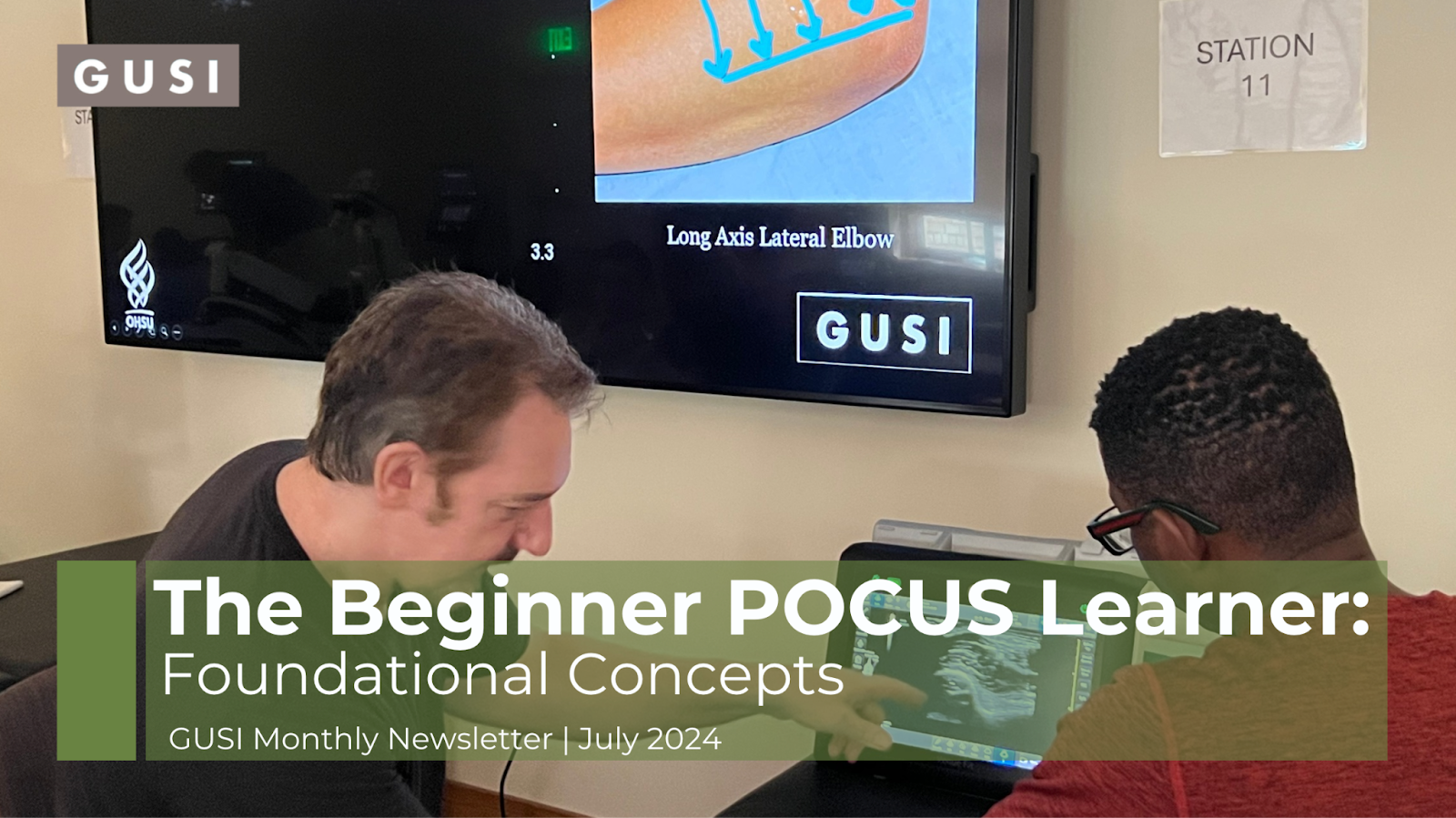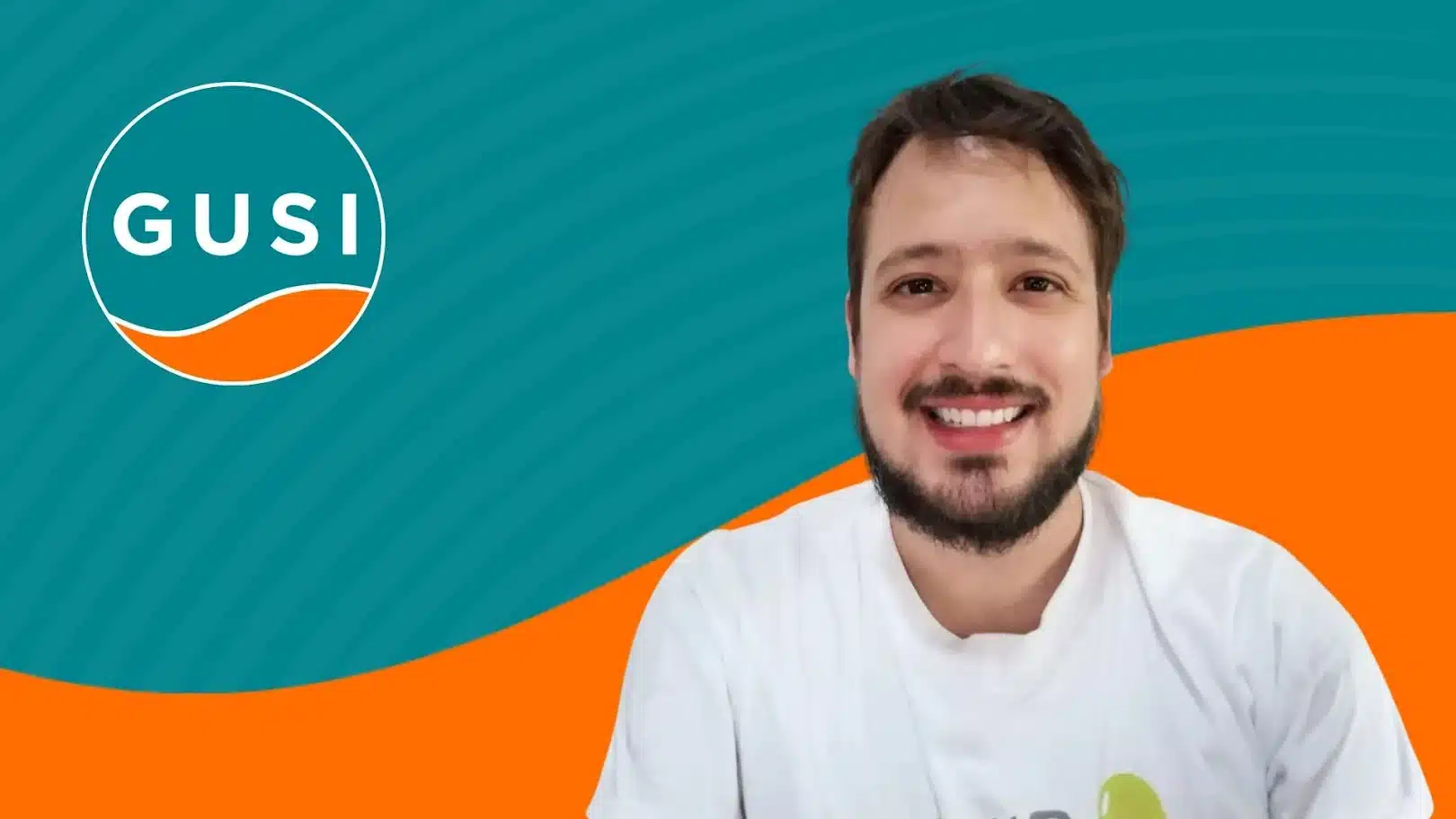At GUSI, we’ve taught thousands of learners at all stages in their POCUS journeys.
Last month’s newsletter focused on habit formation and overcoming barriers when starting your POCUS journey. This month, we’re continuing our focus on new POCUS learners by delving into the content of basic ultrasound skills. If you’re feeling frustrated or stuck, it may mean that you need to go back and spend time with these skills. If you’re more advanced, we hope these resources will help you guide mentees.
Just like learning to play an instrument or sport, learning POCUS requires time, thoughtfulness, and practice. And just like playing scales or doing basketball drills, there are essential components of POCUS practice that will help you scan like a virtuoso:
- understanding basic ultrasound terminology and how to connect the 3D body to the 2D ultrasound screen
- scanning deliberately and systematically
- practice and reflect daily with our core workout
1. Understand basic terminology and the 2D to 3D relationship (screen to body)
It can be challenging to wrap your mind around how ultrasound images are formed, but it is essential to building your scanning skills.
Take a few minutes to make sure you understand the terms hypoechoic, hyperechoic, anechoic, isoechoic. Make sure you understand what sliding, rocking, fanning/tilting, and rotating the probe mean. Take your probe and gel bottle and angle your gel bottle in different ways relative to the probe. Think about what images will form on the ultrasound screen.
We give an impromptu version of the above quiz when working with a new resident or POCUS learner in order to assess their familiarity with POCUS basics and better direct our teaching.
Every GUSI course has an “ultrasound basics” section with videos that discuss in-depth how ultrasound images are formed, terminology, basic probe movements, and the 2D to 3D connection.
Additionally, GUSI has partnered with e Sono to create a comprehensive POCUS course with integrated simulation which allows you to manipulate the probe while visualizing how the ultrasound image changes as you scan through different anatomy
2. Scanning deliberately
Focus on understanding the connection between the adjustments you are making (to your probe position and the machine settings) and the change to the image. Understanding this connection is far more important than obtaining the correct image, and will help you build
To scan deliberately:
- Always anchor your hand on the patient’s body, and use enough gel
- Pay attention to your probe marker (should always be pointing to patient’s right or head). Make sure you understand how this corresponds to the marker on the screen (if you’re not sure which side of the probe is which, put gel only on one side of the probe and see which side of the screen lights up)
- Try to only make one type of movement at a time: slide, fan, rock, or rotate
- After making a movement, check whether it produced the change on the screen that you expect. (Did the structure you are looking at move closer to the center of the screen? Further? Do you understand why that happened?)
- Practice adjusting depth, gain, zoom
- Practice switching modes )2D, color, M mode)
- Practice varying the amount of pressure
You may need to watch videos or read online about your specific ultrasound material to understand how to operate. GUSI essentials videos review the content above as well.
3. Practice with our 15 day Core (POCUS skills) workout
Last but not least, we’ve developed a 15 day core (POCUS skills) workout: a 10 minute per day practice to start shredding (your doubts) and sculpting (your skills). The workout is getting rave reviews from new learners.
We continue to highlight the experience of Tara Ahmadi, MD, family medicine resident profiled in the last newsletter:
“I realized some of my biggest barriers to practicing scanning were feeling awkward asking patients if I could scan them for my own education, and feeling that I didn’t have a good foundation for understanding what I was seeing and how to improve. The 15 day workout gave me a structure to integrate POCUS into my busy day as a family medicine resident, and the manageable daily tasks helped me commit to following through. Watching the GUSI videos has been so helpful in giving me more background and helping me to troubleshoot. I now feel more comfortable picking up the probe and have a solid foundation from which I can continue my learning. I recently attended the in person OB POCUS course, which was an amazing all day experience. The day after I found myself watching more GUSI videos because I am really excited about learning POCUS!”
– Dr. Tara Ahmadi, Family Medicine Resident, Swedish First Hill, Seattle, WA
We want your feedback! What other tips do you have for POCUS beginners? What feedback do you have on these tools for beginners? Want to share your experience as a POCUS learner?
Let us know!
Happy scanning,
Best wishes,
Kevin, Mena, & the GUSI Education Team



